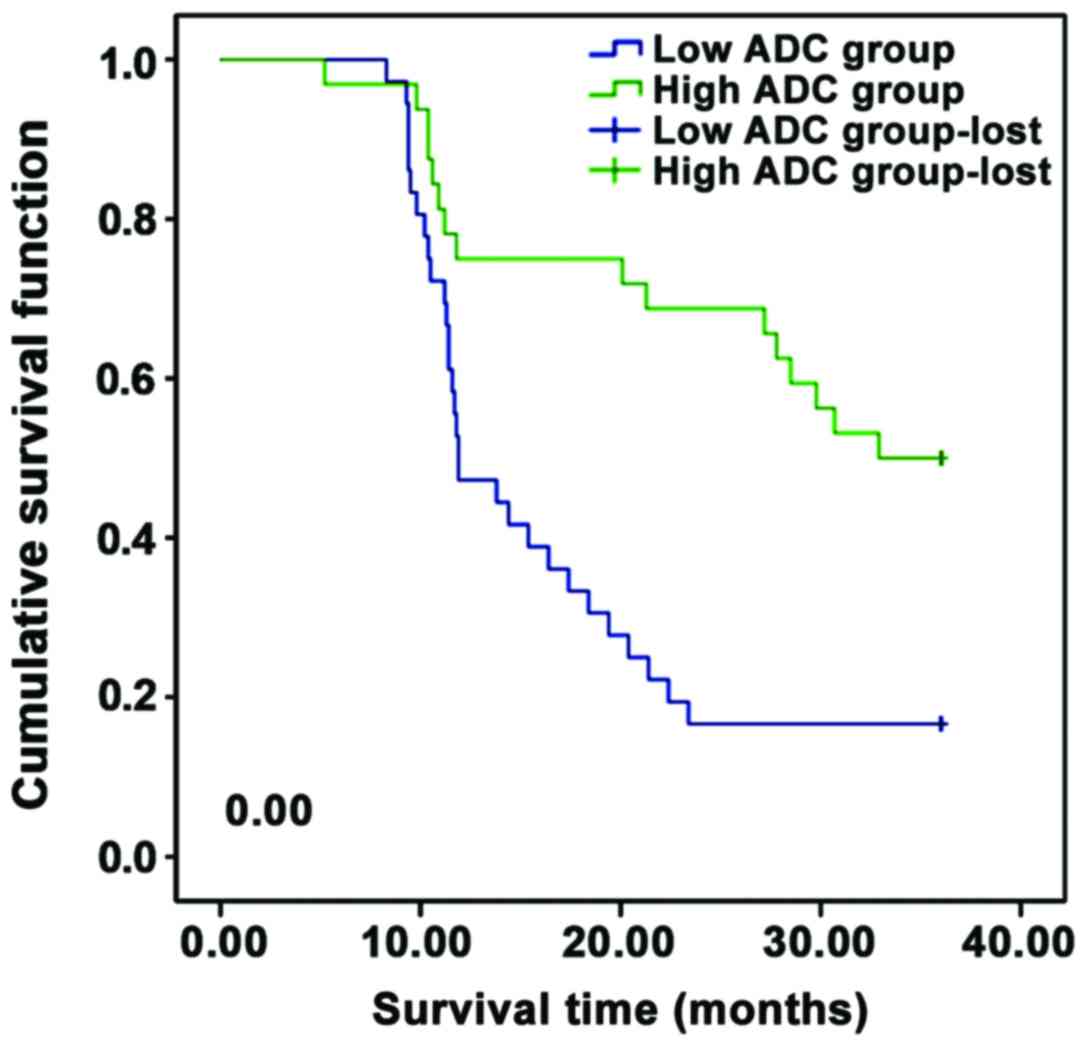|
1
|
Probst A, Aust D, Märkl B, Anthuber M and
Messmann H: Early esophageal cancer in Europe: Endoscopic treatment
by endoscopic submucosal dissection. Endoscopy. 47:113–121.
2015.PubMed/NCBI
|
|
2
|
Oyama T, Hotta K and Tomori A: Endoscopic
submucosal dissection for superficial esophageal squamous cell
carcinoma and adenocarcinoma. Gastrointest Endosc. 65:AB1102007.
View Article : Google Scholar
|
|
3
|
van der Sluis PC, Ruurda JP, Verhage RJ,
van der Horst S, Haverkamp L, Siersema PD, Rinkes Borel IH, Ten
Kate FJ and van Hillegersberg R: Oncologic long-term results of
robot-assisted minimally invasive thoraco-laparoscopic
esophagectomy with two-field lymphadenectomy for esophageal cancer.
Ann Surg Oncol. 22 Suppl 3:S1350–S1356. 2015. View Article : Google Scholar : PubMed/NCBI
|
|
4
|
Drummond MB, Lambert AA, Hussien AF, Lin
CT, Merlo CA, Wise RA, Kirk GD and Brown RH: HIV infection is
independently associated with increased CT scan lung density. Acad
Radiol. 24:137–145. 2017. View Article : Google Scholar : PubMed/NCBI
|
|
5
|
Boone D, Taylor SA and Halligan S:
Diffusion weighted MRI: Overview and implications for rectal cancer
management. Colorectal Dis. 15:655–661. 2013. View Article : Google Scholar : PubMed/NCBI
|
|
6
|
Nozaki I, Hato S, Hori S, Nishide N and
Kurita A: Incidence of food residue interfering with postoperative
endoscopic examination for gastric pull-up after esophagectomy.
Esophagus. 13:195–199. 2016. View Article : Google Scholar
|
|
7
|
Tachibana M, Kinugasa S, Hirahara N and
Yoshimura H: Lymph node classification of esophageal squamous cell
carcinoma and adenocarcinoma. Eur J Cardiothorac Surg. 34:427–431.
2008. View Article : Google Scholar : PubMed/NCBI
|
|
8
|
Arnal Domper MJ, Ferrández Arenas Á and
Lanas Arbeloa Á: Esophageal cancer: Risk factors, screening and
endoscopic treatment in Western and Eastern countries. World J
Gastroenterol. 21:7933–7943. 2015. View Article : Google Scholar : PubMed/NCBI
|
|
9
|
Xu W, Liu Z, Bao Q and Qian Z: Viruses,
other pathogenic microorganisms and esophageal cancer. Gastrointest
Tumors. 2:2–13. 2015. View Article : Google Scholar : PubMed/NCBI
|
|
10
|
Lin G, Han SY, Xu YP and Mao WM:
Increasing the interval between neoadjuvant chemoradiotherapy and
surgery in esophageal cancer: A meta-analysis of published studies.
Dis Esophagus. 29:1107–1114. 2016. View Article : Google Scholar : PubMed/NCBI
|
|
11
|
Chou CT, Chen RC, Lin WC, Ko CJ, Chen CB
and Chen YL: Prediction of microvascular invasion of hepatocellular
carcinoma: Preoperative CT and histopathologic correlation. AJR Am
J Roentgenol. 203:W253–9. 2014. View Article : Google Scholar : PubMed/NCBI
|
|
12
|
Ganten MK, Schuessler M, Bäuerle T,
Muenter M, Schlemmer HP, Jensen A, Brand K, Dueck M, Dinkel J,
Kopp-Schneider A, et al: The role of perfusion effects in
monitoring of chemoradiotherapy of rectal carcinoma using
diffusion-weighted imaging. Cancer Imaging. 13:548–556. 2013.
View Article : Google Scholar : PubMed/NCBI
|
|
13
|
Tchelebi L and Ashamalla H: Overcoming the
hurdles of using PET/CT for target volume delineation in curative
intent radiotherapy of non-small cell lung cancer. Ann Transl Med.
3:1912015.PubMed/NCBI
|
|
14
|
Anderson SW, Barry B, Soto JA, Ozonoff A,
O'Brien M and Jara H: Quantifying hepatic fibrosis using a
biexponential model of diffusion weighted imaging in ex vivo liver
specimens. Magn Reson Imaging. 30:1475–1482. 2012. View Article : Google Scholar : PubMed/NCBI
|
|
15
|
Giganti F, Salerno A, Ambrosi A, Chiari D,
Orsenigo E, Esposito A, Albarello L, Mazza E, Staudacher C, Del
Maschio A, et al: Prognostic utility of diffusion-weighted MRI in
oesophageal cancer: Is apparent diffusion coefficient a potential
marker of tumour aggressiveness? Radiol Med (Torino). 121:173–180.
2016. View Article : Google Scholar
|
|
16
|
Purushotham A, Campbell BC, Straka M,
Mlynash M, Olivot JM, Bammer R, Kemp SM, Albers GW and Lansberg MG:
Apparent diffusion coefficient threshold for delineation of
ischemic core. Int J Stroke. 10:348–353. 2015. View Article : Google Scholar : PubMed/NCBI
|
|
17
|
Mori N, Ota H, Mugikura S, Takasawa C,
Ishida T, Watanabe G, Tada H, Watanabe M, Takase K and Takahashi S:
Luminal-type breast cancer: Correlation of apparent diffusion
coefficients with the Ki-67 labeling index. Radiology. 274:66–73.
2015. View Article : Google Scholar : PubMed/NCBI
|
|
18
|
PLOS ONE Staff: Correction: Correlation of
the apparent diffusion coefficient (ADC) with the standardized
uptake value (SUV) in lymph node metastases of non-small cell lung
cancer (NSCLC) patients using hybrid 18F-FDG PET/MRI. PLoS One.
10:e01206062015. View Article : Google Scholar : PubMed/NCBI
|
|
19
|
Boesen L, Chabanova E, Løgager V, Balslev
I and Thomsen HS: Apparent diffusion coefficient ratio correlates
significantly with prostate cancer gleason score at final
pathology. J Magn Reson Imaging. 42:446–453. 2015. View Article : Google Scholar : PubMed/NCBI
|














